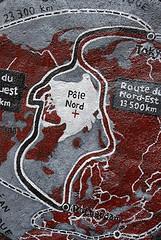Deep Ecology
 Finally, the exceeding redistribution of the time, money and energy. According to Mollison (1991), this third component means that after dealing with the necessities basic and drawn the systems with optimum of our abilities, we can extend to our influence and energies in helping the others to reach this approach with ‘ ‘ creation of equitable methods of distribution, guaranteeing the access to the resources to that of them they need, without the intervention of different systems of commerce or accumulation of riqueza’ ‘ (TO SOUND, 1998, p.6). The systems of the Permacultura also are based on basic ethics of the life, that in accordance with Miralles and Romero (2001), is associated with deep Ecology4 (Deep Ecology). Beyond the ethics, the Permacultura if bases on some principles that are essential for a good planning and that they are proceeding from the diverse areas of the knowledge as the Ecology, Social Architecture, Geography, Biology, Agronomy, Sciences and Economy. In relation to the character to multidiscipline of the principles of the Permacultura the scientific base for the principles of design in Permacultura if points out generally in the scope of the modern science of the ecology, and more particularly, inside of a branch of the ecology called ‘ ‘ ecology of sistemas’ ‘.
Finally, the exceeding redistribution of the time, money and energy. According to Mollison (1991), this third component means that after dealing with the necessities basic and drawn the systems with optimum of our abilities, we can extend to our influence and energies in helping the others to reach this approach with ‘ ‘ creation of equitable methods of distribution, guaranteeing the access to the resources to that of them they need, without the intervention of different systems of commerce or accumulation of riqueza’ ‘ (TO SOUND, 1998, p.6). The systems of the Permacultura also are based on basic ethics of the life, that in accordance with Miralles and Romero (2001), is associated with deep Ecology4 (Deep Ecology). Beyond the ethics, the Permacultura if bases on some principles that are essential for a good planning and that they are proceeding from the diverse areas of the knowledge as the Ecology, Social Architecture, Geography, Biology, Agronomy, Sciences and Economy. In relation to the character to multidiscipline of the principles of the Permacultura the scientific base for the principles of design in Permacultura if points out generally in the scope of the modern science of the ecology, and more particularly, inside of a branch of the ecology called ‘ ‘ ecology of sistemas’ ‘.
Others you discipline intellectuals, more particularly the geography of the landscape and the etno-biologias, have contributed with concepts that come being suitable to the principles of design. (Holmgren 2007, p.9) the principles of the Permacultura are inherent to any permacultural planning. According to Mollison (1998, p.5): To elaborate good design permacultural she is necessary to follow two basic steps. The first one is of that the laws and the principles they can be adapted to any climatic and cultural condition and second is more narrowly associate with the practical techniques, that in accordance with change the climate and with the culture.